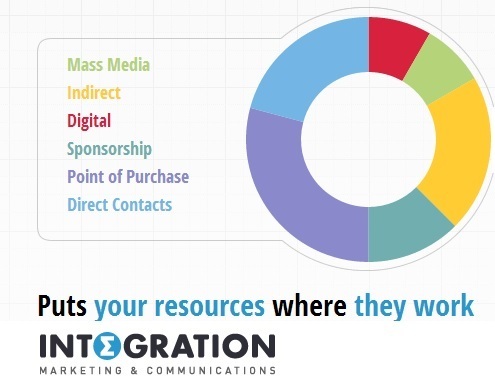
This is a question we are often asked and we are sorry that there is no simple answer. But, we thought we would outline some of the options that we have discussed with clients.
Before we look at options for measuring integrated marketing effectiveness let us consider the “dream” scenario, let us look at what the ideal situation would be, so that we can compare each of the options against it.
In our view the dream is to have a holistic measurement system that has a common currency of measurement across all marketing channels for costs, outputs, and outcomes. Outputs can be considered as a measure of scale eg. Impressions, and outcomes is the effect of the outputs eg. Awareness or clicks.
Think of the London Underground Tube Map below.

It is a great metaphor for your brand or business, where each of the “lines” represents a different marketing channel. For example the brown line, may be YouTube and the red line, your website, the light blue line, your stores etc etc. People are on a series of dynamic journeys through your brand on the “lines”. At different times they have the opportunity to change at “stations”. This is where a consumer, in real life, moves from one marketing channel to another.
The ideal would be to have this map for each of your brands with data on how many people are joining each marketing channel with each marketing intervention (or station), swapping to different marketing channels (at each station), or leaving your brand. You would then need to understand the effect of each channel on actions (purchase, clicks etc.) and attitudes (awareness, preference etc.).
Digital dashboards
There are a host of digital dashboards available that allow clients or their agencies to monitor many aspects of their digital performance.
Most major players like Adobe, Oracle, Salesforce, Microsoft have BI dashboards that can manage marketing data via API’s. And, then there are independent specialists, and others solely focused on marketing. They all are useful at visualising stuff, and comparing things. But, they are only as good as the team that sets them up, and the data inputs. The truth is that often the dashboards fall short of their promise as they are not specified correctly and the necessary work to pick the right KPIs is not done correctly.
Regression Modelling
If you have lots of historical data across your marketing channels, but in inconsistent forms, you may be able to use regression analysis to model your marketing effectiveness. Historically, this route has been used by many sophisticated advertisers, and has the huge advantage of being able to look at price and promotional information, and be able to model and predict outcomes.
For those clients with relatively simple marketing ecosystems and categories, and with stable, predictable markets, econometric modelling is a great tool.
There are however some things for an advertiser to consider. Firstly, what resource are you going to use to do the modelling?
In an ideal world you would do the work in-house. This means that you as a client own your data, the model, and no-one understands the data and decision-making better than you.
However, you may not have the skills in-house.
You need to consider the different resource options against the following criteria:
- Independence & Objectivity
- Ability to make insights actionable
- Understanding of business, brand, creativity, and other tactics
- Access to data
- Network
- Cost
Agent Based Modelling
The problem with regression based modelling is that it requires consistent historical data, and relatively stable markets. Imagine you were a VC backed start-up, you have no historical data, you are creating a new market, so how can you effectively plan and then evaluate your marketing channels and ROMI?
Welcome agent based modelling.
Agent based modelling is where an “agent” is created by computer. The agent usually represents an individual consumer. The agent has “rules” ascribed to it, that dictate how the agent will behave in different circumstances. Agent based modelling was used to crack the code of how birds Flock, which naturally we love!
Take this example; a car company is launching a new car. A car buying agent is created. Rules can be ascribed to the agent about what competitor car companies do, what economic situations occur, what life changes might occur (family, house purchase etc.), distribution, behaviour based upon pricing, and so on. Scenarios can be run and assessed and decisions taken accordingly.
Companies like agent based modelling companies and others may provide solutions for certain clients/situations. However, as with some regression models, having your precious data outside your company and having to pay by the scenario, may prove a stumbling block or a concern.
Independent Common Currencies
One of the biggest challenges of multi-channel marketing effectiveness work is to gain a “common currency” for outcome, across all channels. There is no multi-market industry standard, so primary research is normally required. This can prove expensive if you operate in multiple markets and in multiple categories. There are, however, research techniques that evaluate each channel and allow cost accounting methods to be applied to evaluate ROI by marketing channel. Amongst these companies Integration IMC have been long established and have a depth of study and experience that is hard to argue with.

One of the major benefits of studies like Integration IMC’s MCA is that they allow comparable studies across channels, markets, and categories which is particularly useful for global best practice transfer.
Whilst research like MCA does not actually link directly to sales, a simple correlation analysis can show the statistical confidence of the predictions, and in many cases the MCA models and market share have been proven to be very closely correlated.
If you’d like to see how we have helped companies like McDonalds, VW, Ford and others measure their integrated marketing then please fill in the form to access case histories and details of suppliers.
